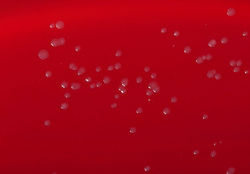Difference between revisions of "Corynebacterium renale"
Jump to navigation
Jump to search
| (5 intermediate revisions by 2 users not shown) | |||
| Line 1: | Line 1: | ||
| − | {{ | + | {{Taxobox |
| + | |name =''Corynebacterium renale'' | ||
| + | |phylum =Actinobacteria | ||
| + | |order =Actinomycetales | ||
| + | |family =Corynebacteriaceae | ||
| + | |genus =Corynebacterium | ||
| + | |species =''C.renale'' | ||
| + | }} | ||
[[File:corynebacterium ren.jpg|right|thumb|250px|<small><center> Blood agar plate culture of Corynebacterium renale.(Joel mills | [[File:corynebacterium ren.jpg|right|thumb|250px|<small><center> Blood agar plate culture of Corynebacterium renale.(Joel mills | ||
| Line 13: | Line 20: | ||
''Corynebacterium renale'' is a species of the ''[[Corynebacterium species - Overview|Corynebacterium]]'' genus. The species was previously classified as types I, II and III, but is now classified as ''C. renale'', ''C. pilosum'' and ''C. cystitidis''. | ''Corynebacterium renale'' is a species of the ''[[Corynebacterium species - Overview|Corynebacterium]]'' genus. The species was previously classified as types I, II and III, but is now classified as ''C. renale'', ''C. pilosum'' and ''C. cystitidis''. | ||
| − | It is found in the vulva, vagina and prepuce of normal cattle and can cause Bovine [[ | + | It is found in the vulva, vagina and prepuce of normal cattle and can cause Bovine [[Pyelonephritis|pyelonephritis]], resulting in fever, anoexia, decreased milk production and enlarged ureters and kidneys palpated per rectum. It also causes [[Ulcerative Balanoposthitis|ulcerative balanoposthitis]] in ewes and [[Cystitis|cystitis]]. |
''C. renale'' produces small, non-haemolytic colonies after 24 hours. Pigment is also produced after 48 hours. | ''C. renale'' produces small, non-haemolytic colonies after 24 hours. Pigment is also produced after 48 hours. | ||
| + | |||
| + | {{unfinished}} | ||
[[Category:Corynebacterium_species]] | [[Category:Corynebacterium_species]] | ||
| − | [[Category:To_Do_- | + | [[Category:To_Do_-_Bacteria]] |
Latest revision as of 13:32, 24 May 2011
| Corynebacterium renale | |
|---|---|
| Phylum | Actinobacteria |
| Order | Actinomycetales |
| Family | Corynebacteriaceae |
| Genus | Corynebacterium |
| Species | C.renale |
| Also known as: | C.renale |
Corynebacterium renale is a species of the Corynebacterium genus. The species was previously classified as types I, II and III, but is now classified as C. renale, C. pilosum and C. cystitidis.
It is found in the vulva, vagina and prepuce of normal cattle and can cause Bovine pyelonephritis, resulting in fever, anoexia, decreased milk production and enlarged ureters and kidneys palpated per rectum. It also causes ulcerative balanoposthitis in ewes and cystitis.
C. renale produces small, non-haemolytic colonies after 24 hours. Pigment is also produced after 48 hours.
| This article is still under construction. |
